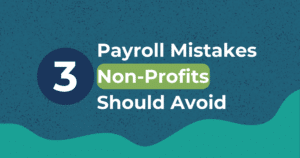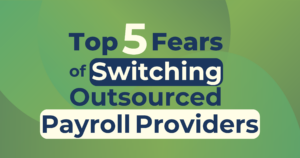As part of our series on best practices, we made the case for why you need to prioritize giving feedback to your team through a scheduled performance evaluation.
This week we’re going to talk about a better way to conduct performance reviews.
Good management includes an element of coaching. If you watch coaches they are constantly calling plays throughout the game, pacing the sidelines, shifting their talent around, and giving players pep talks (or sometimes a kick in the tail.)
And while most of us don’t know exactly what really goes on in a locker room we’ve seen teams emerge from the locker room looking completely different after half-time.
One of those teams is the San Francisco 49ers. The 49ers pulled off the biggest regular season comeback in NFL history in 1980 against the New Orleans Saints. The Saints went up 35-7 in the first half and they weren’t even on their own turf! One struggling 49ers team went into the locker room and one hungry, coordinated team came out. Hall of Fame quarterback Joe Montana lead the 49ers to 38-35 victory, shutting the Saints out completely in the second half. It’s safe to say that that team got some critical feedback that turned their play around.
Waiting an entire year to give an employee feedback is kind of like playing Monday morning quarterback: it’s too late to influence the result.
Coaching is dynamic and in today’s fast-paced work environment there is a greater need for real-time feedback. That doesn’t exclude the need for formal performance evaluations, it simply means to ensure you are using them with a regular and ongoing performance coaching structure. Here are 10 best practices for great performance reviews:
- Start by allowing each employee to do a self-appraisal. This allows your team to reflect on their performance prior to your meeting so that the evaluation is more of a conversation about their results and not solely the manager’s perspective.
- Use quantifiable, performance behaviors and results. Do not focus on personal traits that you find undesirable such as questionable judgment or lack of creativity. Evaluate your team on objective criteria and use specific examples to support your rating. These could include “receives consistent praise from our clients for his attentiveness to detail in his proposals” or “meets or exceeds all sales benchmarks.” If you don’t have pre-established evaluation criteria make sure you put them in place prior to the evaluation season.
- Create actionable goals. Reviews are not just a time to reflect on your employee’s prior performance but the time to set fresh, measurable goals for the next review period (or another specific deadline) and actually revisit them.
- There should be no surprises. If your employee has been showing up late to work for six months this should not be the first-time you call her out on it. Addressing the good and the bad when it happens is a much better strategy than waiting until a once-a-year performance evaluation.
- Invite feedback. A good manager should invite feedback so that performance reviews can be a dialogue. Ask your team member how you can help him meet his goals, what tools he needs to succeed, and what kind of training might help him best contribute to the organization.
- Ask better questions. The unoriginal “where do you see yourself in five years?” can be more overwhelming than insightful. Be more specific. What do you like best about the work you do? Is there a role within the company that you’re interested in pursuing? Are there parts of your job that frustrate you? This can help you channel your employee’s skills and passions for her personal development and your organization’s betterment.
- Is it time for a promotion? If have an employee who is consistently earning a rating of “exceeds expectations” or “outstanding” you should be looking for opportunities within the organization to give him more responsibility, whether that’s a title change or maybe supervising interns or new hires.
- Pick your reviewers carefully. A review should only be given by the direct supervisor. If the employee is once or twice removed from the manager that’s not the appropriate manager to give the review. Another option to consider is a 360-degree review where feedback is solicited from their subordinates, colleagues and manager in order to gather a fuller perspective on their performance.
- Schedule check-ins. Set up a less formal time to address your employees’ ongoing performance and check in on their job satisfaction and engagement. Meetings can be monthly or bi-monthly over coffee. If you’re having more regular check-ins your performance reviews will go a lot smoother and it will also reduce recency bias. (Recency bias means you’re more likely to focus on the employee’s performance over the past month rather than the past twelve, which can, for better or worse, not give an accurate perspective.)
- Celebrate in the moment. Don’t wait until review time to recognize your team members for crushing their goals. Mentors coach their employees in the face of mistakes turning them into growth opportunities.
In Your Corner
Chances are you’d like to be more intentional in coaching your team but payroll or some other HCM responsibilities are stealing all your time. Punt your back-office tasks to us so you can focusing on hiring, retaining and developing the best talent. Let’s set up a time to talk.







